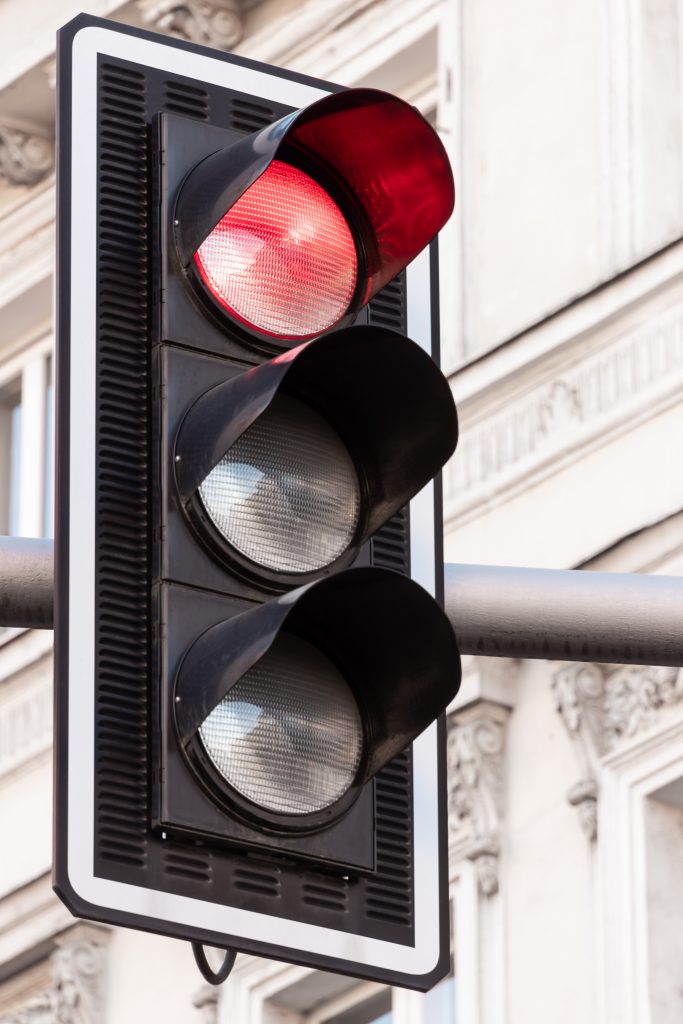No matter the destination, we usually want to get there as fast as we can and the red light can be seen as the main obstacle in our way. Many of us have complained at some point or another about ‘hitting every single red light’ on the journey, but actually, these lights are meant to keep drivers safe and help with traffic flow. Traffic lights also help us to avoid hectic queues of traffic and aid us on roundabouts and busy dual carriageways.
When it comes to faulty traffic signals however, the malfunctioning lights can represent a significant danger to drivers. Some areas have closed major roads as a result of broken traffic lights posing a threat to public safety, whilst temporary lights have been installed in others.
According to data, this issue is widespread. There were over 120 road traffic accidents in Merseyside alone from 2010-2016 as a direct result of faulty lights, with 140 car crash accidents in Surrey over the same period of time for the same reason. Signals can fail for a variety of different reasons, from slugs (a trail left by the animal resulted in the death of a teenager in the Midlands, after it caused a short-circuit) to broken electric connections. It is therefore important that drivers are educated on how to act if such a situation ever occurs.
This article will help you to understand what to do when you encounter a faulty traffic light, so that you are able to make informed and calm decisions if the situation arises.
Safe driving
If you do find yourself approaching a broken traffic light, you should bring your vehicle to a stop, as though you are driving towards a red light. Then, it’s important to follow the right-of-way laws. The Highway Code states that you should treat the situation in the same way you would an unmarked junction and proceed with great care. The will help to ensure both you and your fellow road users can carry on your journeys safely.
Safe judgement
This might seem obvious to many of you, but it’s key to use common sense and your own judgement in such situations. In an article on the BBC, Vince Yearly of the Institute of Advanced Motorists said: “It’s a tricky one because the absolute copper-bottom rule is that the red light must be obeyed. However, if you’ve been sitting there for a few minutes and it’s become fairly obvious the lights aren’t changing then you’ve got to reconsider.
“So, if you can see ahead of you quite clearly and ideally see the other set of lights or the back of them, I would lower my window a little to hear if there’s anything moving in your vicinity. Then put your lights on and very tentatively and cautiously start to make your way forward.”
Although Yearly does admit that his answer isn’t scientific, it has been advised that you should wait for at least four minutes before deciding to move on.
Who to contact
Faulty traffic signals should be reported to local authorities as soon as it’s safe to do so. The reason these signals are in place are to stop traffic where it may not have originally stopped, so if they aren’t working, chances are that people won’t stop. This can be extremely dangerous, so it’s important that the those who take care of the roads know about any issues. You can contact your local authorities to inform them about your discovering by telephone or online alternatives.
Malfunctioning traffic lights not only slow down our journeys, they also represent a significant danger to all drivers, leading to increased risk of accident and traffic build up. With so many cars on the roads nowadays, it’s best to report problems as soon as you can – following these steps will help to limit any disruption and keep you safe on your journeys.
Sources
https://portal.southtyneside.info/eservices/frmHomepage.aspx?FunctionId=127
http://news.bbc.co.uk/local/derby/hi/people_and_places/newsid_8741000/8741601.stm
https://nytrafficticket.com/what-to-do-when-approaching-a-broken-traffic-light/
https://www.accidentadvicehelpline.co.uk/blog/compensation-accident-caused-faulty-traffic-lights/

